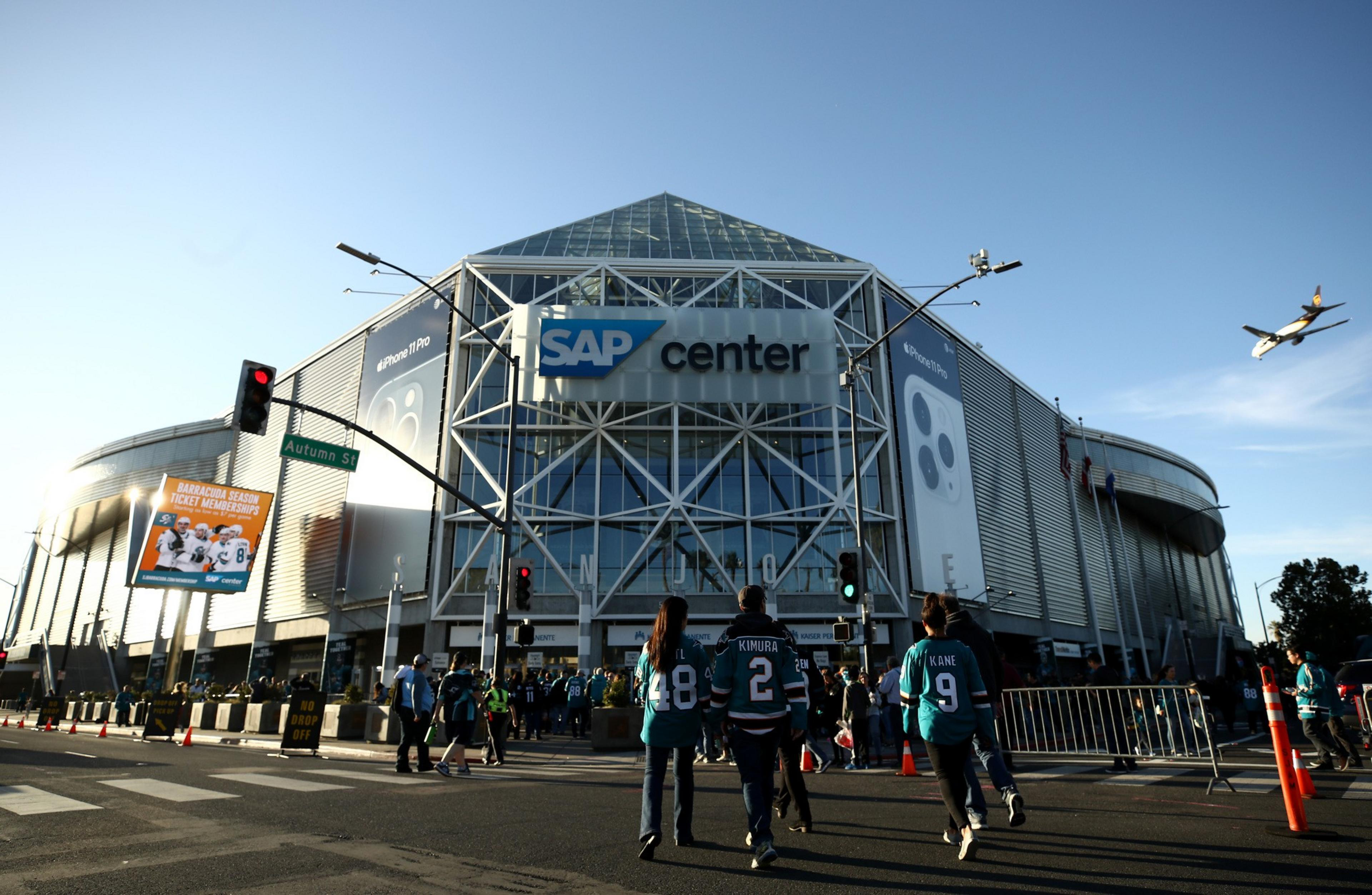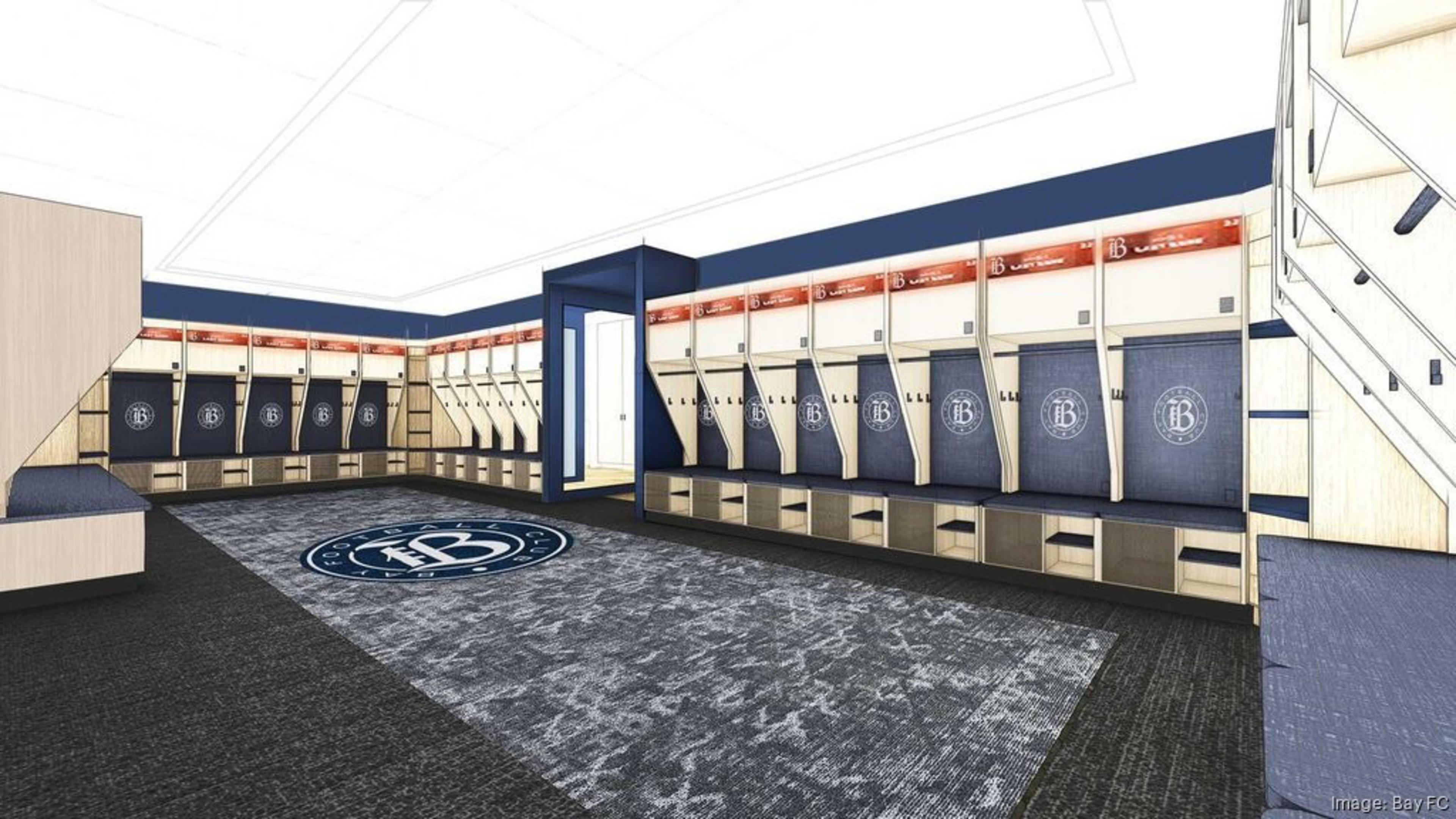On-the-field performance is how most folks judge sports teams, but these organizations’ roles as major property owners are a key part of their viability as business enterprises.
From San Francisco to Oakland down to San Jose, there are millions of fans across the region and acres of land for new stadiums, facilities and other projects.
Here’s a tour around the region and what every major sports team is doing in their off-the-field role as real estate developers and property owners.

San Francisco 49ers (NFL)
Levi’s Stadium has served as the 49ers’ home for a decade. The 68,500-seat venue has hosted some of the region’s biggest draws—from Taylor Swift to Beyonce to international soccer games. More is coming. In 2026, the stadium will host Super Bowl LX and the FIFA World Cup games in the same calendar year.
However, the team has an acrimonious relationship—as evidenced by multiple lawsuits (opens in new tab)—with the city of Santa Clara, which leases the land underneath Levi’s Stadium to the team at a discounted rate in exchange for a share of event revenue. Top of mind is the city’s continued payment of an $850 million loan it took out to construct the stadium. Councilmember Anthony Becker is set to go on trial this year for illegally leaking documents to the 49ers (opens in new tab) and lying about it.
Nevertheless, Santa Clara is still hoping the area surrounding the stadium will become a new urban hub, essentially serving as a makeshift downtown. Related Companies is leading a massive $8 billion redevelopment that is supposed to deliver thousands of new homes, retail and over 5 million square feet of office space.
Right next to the stadium, industrial giant Prologis splashed $310 million to purchase the land beneath California’s Great America theme park, which it promised to keep open until 2033, though development plans are not yet clear.
The 49ers are Super Bowl contenders now, but team officials only hope that will still be the case in 2026.

San Francisco Giants (MLB)
Oracle Park, located on the San Francisco waterfront, was the only pro sports venue in town for six years after the 49ers left and before the Warriors crossed the Bay Bridge. After opening the ballpark in 2000, the Giants took on an active role in redeveloping the Mission Bay area, which historically consisted of rail yards and industrial sheds.
In what’s been a tough couple of years for San Francisco real estate, the Giants delivered a rare win for the city in the form of its Mission Rock development, which opened its 23-story residential tower The Canyon. In development with real estate giant Tishman Speyer, the project—built on a former parking lot—is eventually slated to feature around 1,000 apartments, 8 acres of new parks and up to 1.7 million square feet of commercial space, which is already being leased up by the likes of Visa Inc. and global IT firm Capgemini.

Golden State Warriors (NBA)
Just a few blocks down from Oracle Park, the delivery of the Chase Center in 2019 marked a major milestone in the transformation of the Mission Bay neighborhood. The Warriors ownership group, which privately financed the construction of the arena, originally planned to build it on Pier 30-32, but ended up purchasing a 12-acre site previously owned by Salesforce instead.
Outside of the arena lies Thrive City, an outdoor plaza that is surrounded by restaurants and office buildings, including the corporate headquarters of Uber and, soon, OpenAI. Multiple residential projects, including one by the aforementioned Related Companies, are across the street.
Should the dynasty that Stephen Curry built come to an end this year, fans can still look forward to the NBA All Star game, which will be coming to the Chase Center for the first time in 2025. Of note, the Warriors organization’s new WNBA team will also begin play at the venue starting that year.

San Jose Sharks (NHL)
The Sharks have called SAP Center home since 1993.
The arena, located adjacent to Downtown San Jose, is owned by the city and leased to the Sharks Sports & Entertainment group, which operates it for all events. The Sharks have a lease to play at SAP Center through 2025, with an option to renew every year after that until 2040.
However, the team’s future in San Jose was up in the air briefly because of Google’s impending redevelopment of the area, called Downtown West. The search giant’s plan to build an 80-acre, mixed-use campus would have detrimental impacts to Sharks fans’ ability to get to and from the stadium, the team once claimed before it backed off a lawsuit against Google and San Jose in 2021 (opens in new tab).
In a recent sitdown with the Silicon Valley Business Journal (opens in new tab) before the current NHL season, team President Jonathan Becher admitted that he would still like to see the area around SAP Center better activated with more housing, dining and retail before the team commits to staying in the city beyond its lease term.
The team also owns and operates several ice rinks across the Bay Area, including in Fremont, Oakland and, soon, Gilroy. Last year, Simone Biles made history (opens in new tab) at SAP Center by winning her eighth U.S. championship there.

San Jose Earthquakes (MLS)
Deeply unpopular Oakland A’s owner John Fisher actually owns more than one pro sports team. Directly across the street from San Jose Mineta International Airport lies PayPal Park, the home stadium for his Major League Soccer team, the Earthquakes.
Even though the outdoor stadium opened less than 10 years ago, Fisher has already called it outdated (opens in new tab), a statement he has quietly walked back in light of the A’s impending move to Las Vegas. Behind the scenes, the Quakes front office has been investing in upgrading the venue’s premium seating options and amenities.
Last month, the team also received the green light from Santa Clara County to proceed with a $50 million development at the county fairgrounds (opens in new tab). The team intends to privately finance the construction of a new training facility for its professional team and will open four soccer fields to the public.

Bay FC (NWSL)
Despite San Francisco Mayor London Breed proclaiming that city would “fight like hell” to earn the rights to host the Bay Area’s newest professional women’s soccer team, Bay FC has committed to playing at least its inaugural season at PayPal Park in San Jose.
Even though the team, financed by San Francisco-based Sixth Street Partners, has resisted calling San Jose its permanent home, its real estate transactions imply otherwise. In November, the team announced that it intends to develop its own 3,000-square-foot training facility (opens in new tab) at San Jose State University. Furthermore, Bay FC also just broke ground this month on a separate 3,600-square-foot facility adjacent to PayPal Park, which will serve as its locker room and offices on game days.
Bay FC kicks off its inaugural season in March.

SF Glens/Oakland Roots (USL)
Despite being told that there isn’t enough land to develop new sports venues, two minor league soccer teams are pursuing new stadium projects in San Francisco and Oakland. The SF Glens, a historic club team, broke ground on a 3,500-seat stadium on Treasure Island last year, and club sources say they hope to lay down the soccer field turf by February.
At the 2022 groundbreaking ceremony, Mayor Breed called the project a “shining jewel” that would put San Francisco on the map in the soccer world. A little over a year later, she pitched replacing the struggling San Francisco Centre mall with a soccer stadium.
Across the Bay Bridge, the popular Oakland Roots organization won exclusive negotiating rights with the City of Oakland to develop a modular 10,000-seat stadium at a site adjacent to the Oakland Coliseum, where the A’s play (for now). Team President Lindsay Barenz recently announced that the team was targeting March 2025 as a potential opening date, assuming permitting and financing are in place.
Correction: This story was updated with the correct name of Oakland A’s and San Jose Earthquakes owner John Fisher.
